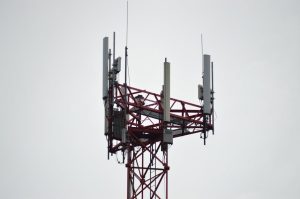Starlink: Revolutionizing Global Internet Connectivity with Satellite Technology

Starlink: Revolutionizing Global Internet Connectivity with Satellite Technology
Starlink is a satellite constellation developed by SpaceX, a private aerospace manufacturer and space transport services company founded by Elon Musk. The project aims to provide high-speed, low-latency internet connectivity worldwide, particularly in areas where traditional fiber optic cables and cellular networks are lacking or non-existent. With its cutting-edge technology and ambitious goals, Starlink is poised to revolutionize the way we access the internet.
History and Development of Starlink
The concept of Starlink was first announced in 2015, with the goal of creating a network of low-Earth orbit (LEO) satellites that could provide global internet coverage. Since then, SpaceX has launched numerous satellites as part of the Starlink constellation, with the first batch of 60 satellites launched in May 2019. The company has continued to launch new batches of satellites, with over 2,000 satellites currently in orbit. The development of Starlink has been a complex and challenging process, requiring significant advancements in areas such as satellite design, propulsion systems, and communication technology.
How Starlink Works
Starlink uses a constellation of LEO satellites, which are placed in orbit at an altitude of approximately 550 kilometers. These satellites are equipped with advanced communication technology, including phased array antennas and high-gain antennas, which enable them to communicate with users on the ground. The satellites use the Ku and Ka frequency bands to transmit and receive data, providing high-speed internet connectivity to users. The Starlink system also includes a network of ground stations, which are used to communicate with the satellites and provide internet connectivity to users.
One of the key features of Starlink is its use of laser communication technology, which enables the satellites to communicate with each other and with ground stations using high-speed laser beams. This technology allows for faster data transfer rates and lower latency, making it ideal for applications such as online gaming and video streaming. Additionally, the Starlink system is designed to be highly redundant, with multiple satellites and ground stations providing backup connectivity in case of outages or failures.
Benefits and Applications of Starlink
Starlink has the potential to revolutionize the way we access the internet, particularly in areas where traditional connectivity options are limited or non-existent. Some of the benefits and applications of Starlink include:
Global connectivity: Starlink provides internet connectivity to users anywhere in the world, regardless of their location. This makes it ideal for applications such as remote work, online education, and emergency response.
High-speed internet: Starlink provides high-speed internet connectivity, with speeds of up to 1 Gbps. This makes it ideal for applications such as video streaming, online gaming, and cloud computing.
Low latency: Starlink’s use of LEO satellites and laser communication technology enables it to provide low-latency internet connectivity, making it ideal for applications such as online gaming and video conferencing.
Rural broadband: Starlink has the potential to provide high-speed internet connectivity to rural areas, where traditional connectivity options are often limited or non-existent.
Challenges and Limitations of Starlink
While Starlink has the potential to revolutionize the way we access the internet, it also faces several challenges and limitations. Some of these include:
Cost: The cost of developing and launching the Starlink constellation is estimated to be in the tens of billions of dollars. This makes it a significant investment for SpaceX and its partners.
Regulatory hurdles: Starlink faces regulatory hurdles in several countries, where it must comply with local laws and regulations regarding satellite communication and internet connectivity.
Competition: Starlink faces competition from other satellite internet providers, such as OneWeb and Amazon’s Kuiper Systems.
Technical challenges: Starlink faces technical challenges such as managing the complexity of the satellite constellation, ensuring reliable communication between satellites and ground stations, and providing high-speed internet connectivity to users.




